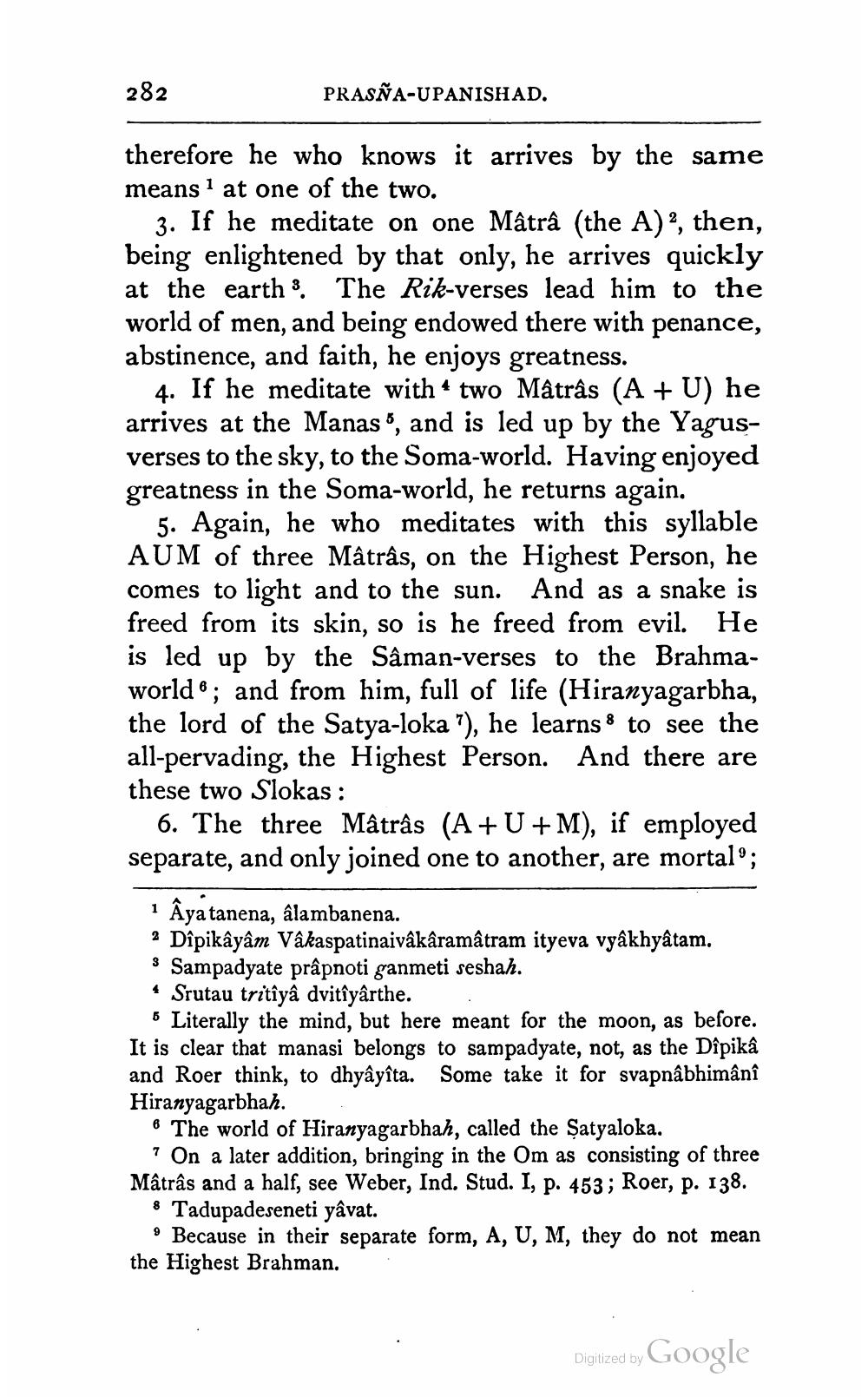________________
282
PRASNA-UPANISHAD.
therefore he who knows it arrives by the same means1 at one of the two.
3. If he meditate on one Mâtrâ (the A)2, then, being enlightened by that only, he arrives quickly at the earth 3. The Rik-verses lead him to the world of men, and being endowed there with penance, abstinence, and faith, he enjoys greatness.
4
4. If he meditate with two Mâtrâs (A + U) he arrives at the Manas", and is led up by the Yagusverses to the sky, to the Soma-world. Having enjoyed greatness in the Soma-world, he returns again.
5. Again, he who meditates with this syllable AUM of three Mâtrâs, on the Highest Person, he comes to light and to the sun. And as a snake is freed from its skin, so is he freed from evil. He is led up by the Sâman-verses to the Brahmaworld; and from him, full of life (Hiranyagarbha, the lord of the Satya-loka 7), he learns to see the all-pervading, the Highest Person. And there are these two Slokas :
6. The three Mâtrâs (A+U+M), if employed separate, and only joined one to another, are mortal';
1
Âyatanena, âlambanena.
2 Dîpikâyâm Vâkaspatinaivâkâramâtram ityeva vyâkhyâtam.
3 Sampadyate prâpnoti ganmeti seshah.
• Srutau tritîyâ dvitîyârthe.
5 Literally the mind, but here meant for the moon, as before. It is clear that manasi belongs to sampadyate, not, as the Dîpikâ and Roer think, to dhyâyîta. Some take it for svapnâbhimânî Hiranyagarbhah.
The world of Hiranyagarbhah, called the Satyaloka.
On a later addition, bringing in the Om as consisting of three Mâtrâs and a half, see Weber, Ind. Stud. I, p. 453; Roer, p. 138.
Tadupadeseneti yâvat.
Because in their separate form, A, U, M, they do not mean the Highest Brahman.
Digitized by
Google




